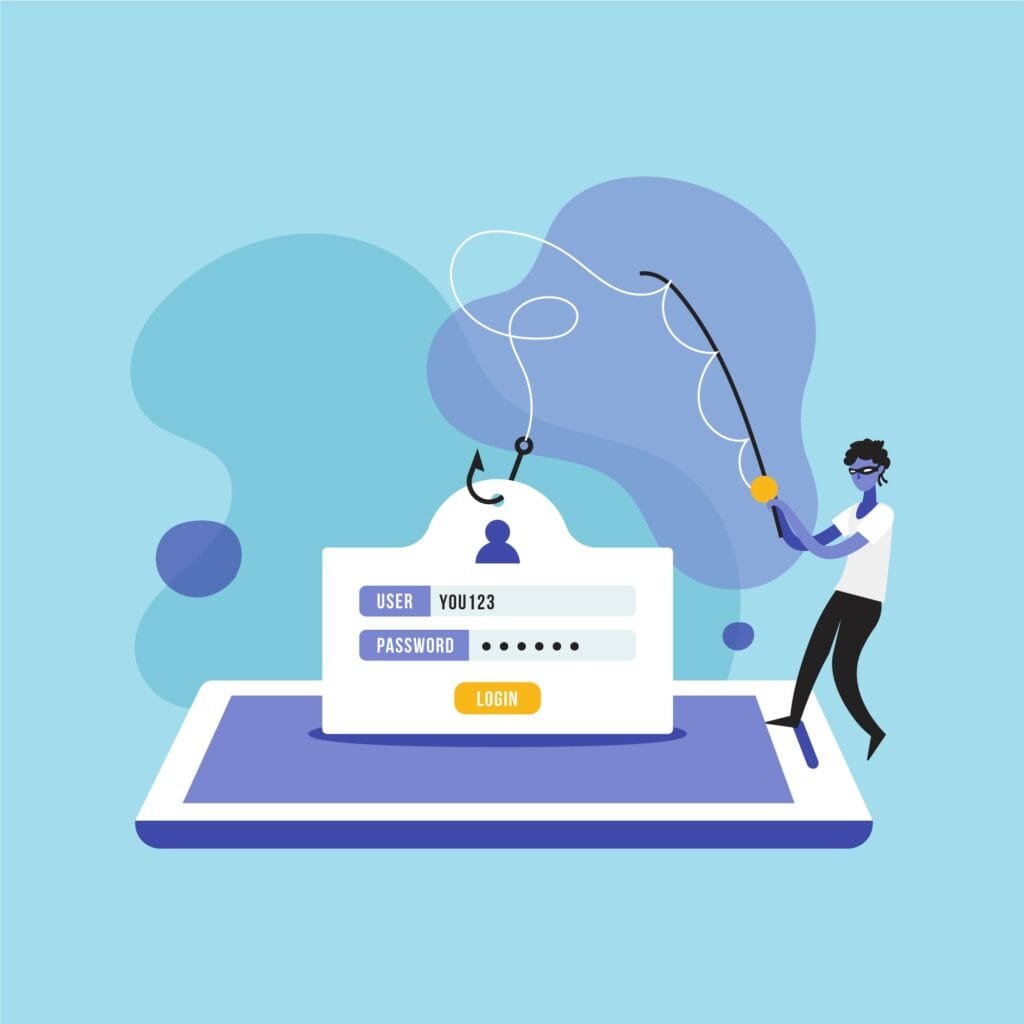5 Sneaky Digital Procurement Phishing Tactics You Need to Know About
Procurement processes have moved online in today’s networked digital environment, which has streamlined operations but also created new opportunities for cyberattacks. digital procurement phishing is one of these risks that has gained notoriety as a particularly sneaky way for cybercriminals to trick businesses by taking advantage of weaknesses in procurement systems. We’ll look at five devious phishing schemes related to digital procurement in this post so you can protect your company.
Introduction to Digital Procurement Phishing
digital procurements phishing sector refers to the employment of fraudulent techniques to trick personnel in procurement-related organizations into revealing private information or making payments without authorization. These assaults, which use social engineering strategies to win over victims’ trust and control them, frequently target staff members who handle vendor management, purchasing, or billing.
Understanding Digital Procurement Phishing
Phishing attacks for digital procurement are a sophisticated type of cybercrime that specifically targets those who work on organizational procurement processes. Organizations might enhance their ability to defend against deceptive strategies such as digital procurement phishing by understanding its dynamics. Let’s explore digital procurement phishing’s definition and methods:
What is Digital Procurement Phishing?
Phishing in digital procurement refers to the employment of deceptive techniques to deceive those in charge of procurement operations into disclosing private information or starting unapproved transactions. Phishers pose as reputable suppliers, vendors, or internal stakeholders to win over their targets’ trust and take advantage of weaknesses in procurement systems.
Digital procurement phishing is extremely focused and customized to certain persons within businesses, in contrast to typical phishing attempts that aim to fool a large number of people. Attackers carry out in-depth research to find possible targets and create messages that are sufficiently convincing to trick even the most watchful recipients.
How does it work?
Phishing attacks targeting digital procurement usually start with identifying important personnel involved in the process, including purchasing managers, accounts payable employees, or vendor relationship managers. Attackers use social media profiles, hacked internal databases, and publically accessible sources to obtain information about their targets.
Attackers use phone conversations, instant messaging, email, and other forms of communication to establish contact with possible targets once they have been located. They frequently pose as reliable suppliers or colleagues to gain credibility and develop a relationship with their targets through the use of social engineering techniques.
Attackers compose their messages with great care to create a sense of significance or urgency in their targets, compelling them to respond right now. Typical strategies include seeking private information (e.g., financial information or login passwords) or convincing recipients to approve payments or modify payment information.
Phishers can use psychological tricks like fear, curiosity, or greed to control their victim’s actions to make their attacks more effective. To improve their chances of success and avoid being discovered by security measures, they make use of cognitive flaws and human weaknesses.
Common Tactics Used in Digital Procurement Phishing

Common Tactics
Digital procurement phishing uses a variety of deceptive techniques to trick personnel in procurement-related companies. It is essential to understand these strategies to put into place efficient defenses against such assaults. Some of the most popular strategies employed in digital procurement phishing are listed below:
1. Spoofed Emails and Websites
One of the most common strategies employed by cybercriminals in phishing attacks related to digital procurement is the creation of spoof emails and websites. Using this technique, attackers craft phony emails or websites that closely mimic reputable suppliers or procurement platforms. These emails frequently urge recipients to respond right away by containing sensitive information or urgent requests for cash.
The attackers may utilize recognizable logos, branding, and language that is consistent with the targeted organization to make these emails and webpages look authentic. They might also use strategies like email spoofing, in which the sender’s address is changed to look real, tricking receivers into thinking the message is from a reliable source.
2. False Vendor Communication
False vendor communication is another typical strategy used in digital procurement phishing. In this case, hackers assume the identity of reputable suppliers or vendors and email purchase orders, payment requests, or false invoices to staff members in charge of procurement. These messages are hard to spot as fake because they frequently include persuasive data like invoice numbers and proper vendor contact information.
False vendor communications aim to deceive staff members into paying money to imaginary bank accounts or disclosing private information, like bank account numbers or login credentials. Attackers can get beyond conventional security measures and carry out their schemes by taking advantage of the trust that exists in established business relationships.
3. Manipulated Invoices and Payment Requests
Attackers may occasionally intercept official invoices or payment requests issued between businesses and vendors and alter them for fraudulent ends. This strategy involves altering the payment instructions or banking information on invoices to redirect money to accounts that the attackers control.
Invoices and payment requests that have been altered to look authentic frequently have minute adjustments that are hard to spot without careful inspection. Through the use of procurement process weaknesses, attackers can redirect payments meant for authorized vendors to their accounts, causing financial losses for the business under assault.
4. Impersonation of Trusted Contacts
Phishers may also pose as executives, managers, or other trusted individuals within the company in an attempt to trick staff members into disclosing private information or approving fraudulent transactions. Attackers can trick victims into avoiding established protocols and procedures by taking advantage of existing relationships and knowledge of internal processes.
The use of impersonation techniques can involve the creation of fake social media profiles or email accounts that closely resemble those of reliable connections, making it difficult for staff members to discern between authentic and fraudulent correspondence. This strategy works especially well in hierarchical organizations when staff members are used to obediently following directions from superiors.
5. Fake Discounts and Offers
Finally, phishing tactics about digital procurement may entice employees to fall for them by posing as promotions, discounts, or exclusive offerings. These offers frequently entice employees to act quickly without first confirming the offer’s veracity by promising substantial savings or exclusive discounts on goods or services that the company frequently purchases.
Email, social media, and other methods of communication that are often used for business transactions can be utilized to distribute fake discounts and offers. Attackers can coerce employees into making snap decisions that compromise security and financial integrity by taking advantage of their desire for cost savings and competitive advantage.
By understanding these typical strategies employed in phishing attempts related to digital procurement, companies may enhance employee readiness and establish strong security protocols to lessen the possibility of being targeted by these types of assaults. To stop hackers from taking advantage of weaknesses in procurement procedures and compromising organizational assets, it is imperative to exercise caution, skepticism, and adherence to established rules.
Case Studies of Digital Procurement Phishing Attacks

Case Studies
Analyzing actual instances of phishing attacks related to digital procurement can give important insights into the strategies employed by hackers and the effects these attacks have on businesses. Here are case studies of recent, widely known phishing attempts related to digital procurement:
The SolarWinds Supply Chain Attack
A highly skilled supply chain assault struck SolarWinds, a top supplier of IT management software, in December 2020. By inserting malicious malware into software updates that were sent to thousands of customers—including Fortune 500 businesses and government agencies—attackers were able to infiltrate SolarWinds’ software development process.
Attackers employing SolarWinds software were able to access networks belonging to companies that used their software, including procurement systems and sensitive data repositories, thanks to the SUNBURST attack. The attackers circumvented conventional security protocols and remained persistent within the targeted networks for months without being noticed by taking advantage of trusted relationships and compromised software upgrades.
The BEC Scam Targeting Toyota Boshoku Corporation
2019 saw Toyota Boshoku Corporation, a division of Toyota Motor Corporation, fall prey to phishing fraud using digital procurement through business email compromise (BEC). Attackers issued false payment requests totaling around $37 million to Toyota Boshoku’s finance department by pretending to be a reputable vendor.
The emails from the attackers closely resembled those from the reputable vendor, down to the precise details of the invoice and the methods for making payments. The fraudulent payments were processed by Toyota Boshoku’s finance department despite internal controls and verification procedures, which caused the company to suffer significant financial losses.
The BEC scams, which were directed toward Toyota Boshoku Corporation, serve as a prime example of how well digital procurement phishing can circumvent conventional security protocols and take advantage of human weaknesses. To stop such attacks, the incident emphasizes the necessity for improved authentication methods, vendor verification processes, and personnel training.
The University of California, San Diego (UCSD) Phishing Incident
The procurement department of the University of California, San Diego (UCSD) was the target of a phishing incident in 2021. Attackers requested modifications to banking information for upcoming payments through emails they sent pretending to be a reliable vendor.
The email seemed genuine, and the requested adjustments were made without the necessary verification, despite the recipient’s reservations. Consequently, UCSD unintentionally transferred more than $1 million in payments to the attackers’ fraudulent bank accounts.
Through an examination of these case studies about digital procurement phishing attacks, companies can acquire invaluable knowledge regarding the strategies employed by cybercriminals and the possible ramifications of becoming a target of these attacks. Protecting corporate assets and reducing the danger of digital procurement phishing requires the implementation of proactive measures including vendor risk management, personnel training, and improved authentication techniques.
Identifying and Preventing Digital Procurement Phishing
Organizations must take preventive action to recognize and stop these fraudulent methods to reduce the possibility of being a victim of digital procurement phishing attacks. Organizations can secure their procurement procedures and prevent money losses and data breaches by implementing strong security rules and encouraging a culture of cybersecurity awareness. The following tactics can be used to spot and stop phishing attempts related to digital procurement:
Employee Training and Awareness
To stop these assaults, it’s crucial to inform staff members about the dangers of phishing attempts related to digital procurement and to regularly train them in identifying phishing attempts. Workers should be encouraged to report any suspicious behavior to the relevant authorities and trained to recognize suspicious emails, websites, and communication channels.
Verification Procedures
Preventing illegal alterations requires the establishment of explicit verification protocols for modifications to vendor information, payment details, and other procurement-related requests. Before acting, staff members should be advised to confirm any requests or adjustments via several channels, including phone conversations or in-person meetings.
Secure Communication Channels
Secure email gateways and encrypted communication channels can help protect against interception and illegal access to private data. By implementing digital signatures and encryption technologies, communications are further secured and are less vulnerable to manipulation or interception by cybercriminals.
Two-Factor Authentication
To enhance security and prevent unwanted access, implementing two-factor authentication (2FA) is recommended for gaining access to procurement systems or authorizing payments. Organizations can reduce the likelihood of account penetration and unlawful transactions by asking users to verify their identity using several factors, such as passwords and biometric data.
Regular Security Audits
To find and fix possible vulnerabilities before cybercriminals can take advantage of them, procurement systems and processes must undergo regular security audits and vulnerability assessments. Through proactive identification and remediation of security vulnerabilities, companies can minimize the impact of phishing attacks on their operations and finances and decrease the probability of successful attacks.
Responding to Digital Procurement Phishing Attacks
Organizations need to respond quickly and forcefully in the event of a phishing assault targeting digital procurement to limit the breach, lessen the effects, and stop additional harm. An efficient reaction requires an established incident response plan as well as clear communication procedures. Organizations can take the following actions to prevent phishing attempts related to digital procurement:
Immediate Steps to Take
Organizations should respond quickly to control phishing attacks targeting digital procurement to stop additional harm from occurring. This includes uninstalling any malicious software or code introduced into procurement systems, isolating impacted systems, and disabling compromised accounts or credentials.
Reporting Incidents
To investigate the attack and plan a reaction, the occurrence must be reported to the appropriate authorities, such as regulatory bodies and law enforcement agencies. Additionally, businesses must inform all impacted parties—vendors, clients, and staff—of the breach and any possible dangers or consequences.
Recovery and Damage Control
A concerted effort is needed to evaluate the amount of harm, restore the compromised systems and data, and put preventative measures in place after a digital procurement phishing assault. This could entail putting improved security measures in place, recovering data from backups, and thoroughly analyzing the event to determine what went wrong and where improvements can be made.
Conclusion
Phishing attacks targeting digital procurement present a serious risk to companies as they take advantage of weaknesses in procurement procedures to trick companies and expose private data. Organizations must continue to be alert and aggressive in preventing these threats as hackers adapt their strategies.
Organizations can reduce their vulnerability to deceptive tactics employed by digital procurement phishers by putting strong security measures in place and being aware of the strategies these individuals employ. A thorough defensive plan must include secure communication routes, two-factor authentication, employee awareness and training, verification processes, and frequent security assessments.
Organizations need to act quickly and decisively in the case of a phishing attack targeting digital procurements to contain the breach, mitigate the damage, and stop further harm. Effective incident response and remediation depend on honest reporting to authorities, clear communication with stakeholders, and comprehensive post-event analysis.








Thanks for sharing. I read many of your blog posts, cool, your blog is very good.